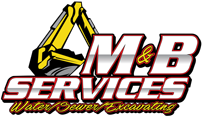
Our sewer lines eventually need to be replaced, just like most appliances and systems in our homes. This, however, requires immediate attention. If any delays occur, substantial damage may result.
Symptoms of sewer gas exposure may include nausea, headaches, dizziness, and impaired cognition. Not to mention the foul smell! Repairs should be made immediately.
Several strategies are used to repair sewer lines, each with their own strengths and weaknesses. Depending on the issues with your sewer line, two main repair methods are used:
External Excavation
Sewer pipe repair with this method is tried and true; it’s been around for years and is still used today.
During an external sewer line excavation, workers have to dig trenches and tunnels to reach the sewer line. As a result, the pipe will be completely exposed, making it easier to repair or replace. However, it damages the land and structures around it.
Interior Access Excavation
It involves precise excavation rather than digging up a large part of the yard. Using this method, sewer lines can be repaired without digging large trenches.
Despite the cost of trenchless sewer line excavation methods, you will not need to pay to repair landscape damage once the work is completed. Pipe bursting may not always be feasible if the lines are too extensively damaged.
Reasons for Digging Up Sewer Lines
If your sewer line needs repair, you may have to dig up your lawn. Some common reasons for excavation include:
- Damage has been done to the existing line. Tree roots are often to blame for this. Your sewer line can also be damaged by oil, grease, and flushing items other than toilet paper. Schedule routine maintenance like drain cleaning to prevent costly repairs.
- Your septic system needs to be updated. Switching from a conventional septic tank to a city sewer system? When your septic tank needs repairs or a city bylaw requires it, you might choose to do this. If so, you will need to install a new sewer line.
- You are building a new residential or commercial building. It’s important to replace your sewer line if you’re building a new home or business! You can do this with an excavation on a new property.
Sewer Line Excavation Process
All utility lines must first be marked by excavators before the real work can begin. It may result in a service outage and injury or even death to those nearby if you hit a utility line by accident. Effective sewer line repair requires careful planning.
Video inspection technology will then be used to determine the condition of your pipes. In this way, they can see what’s going on within the line. They can select the strategy that’s most appropriate for your property and pipes based on this information. Plumbers may need to obtain permits or other inspections before proceeding with the repair.
Methods for plumbing excavation vary according to their specifics. Here are some examples:
Pipe Bursting vs. Open-Top Excavation
Is trench or trenchless sewer repair best for your property? It depends on several factors:
Pipe Bursting
Many homeowners are wary of repairing sewer lines because they don’t want trenches dug in their yards — it may fix the sewer line, but it damages their lawn! Pipe bursting has the advantage of not requiring trenching.
To remove old and broken pipes, we used a pneumatic or hydraulic head. We remove the old damaged pipe and replace it with a new one that’s perfectly sized to fit in that space.
We also offer pipe lining (also known as cured-in-place piping) in Minneapolis and St. Paul for trenchless sewer line repair. Pipes are relined with epoxy using this method. Relining saves you the hassle of removing the old pipes; once they’ve been relined, they’ll function as efficiently as if they were brand new.
They have only existed for two decades, making them relatively recent. In addition to reducing labor costs, the lack of digging minimizes the cost of repairing your property.
Open-Top Excavation
Where trenchless sewer line repairs aren’t possible, there is an alternative:
Although open-top sewer line excavation is labor-intensive and time-consuming, it ensures that your sewer line will be repaired completely. Both sides of the pipe must be dug as well as around it. Since this requires digging up a large area of your yard, you can imagine the inconvenience.
The repairs can begin once the pipes are uncovered. Whether the sewer line needs to be replaced completely or just adjusted, the workers will have easy access to it.
A trenchless repair is usually more expensive than an open-top excavation. The method is reliable for repairing a sewer line or replacing it with a brand new one. However, it has its disadvantages, including the time it takes to complete, and the expense of repairing your yard.
Conclusion
A damaged sewer line affects most homeowners and businesses at some point. Minimizing damage or exposure to hazards requires prompt replacement.
What is the best repair method for your property? Our team can help!
M & B Services provides plumbing services in Minneapolis and St. Paul. In addition to pipe bursting and lining, we offer a range of sewer line repair methods. For sewer line repair, give us a call today and we’ll help you determine the best excavation method. In Minneapolis and St. Paul, and the surrounding areas, we also provide water line repair services.
